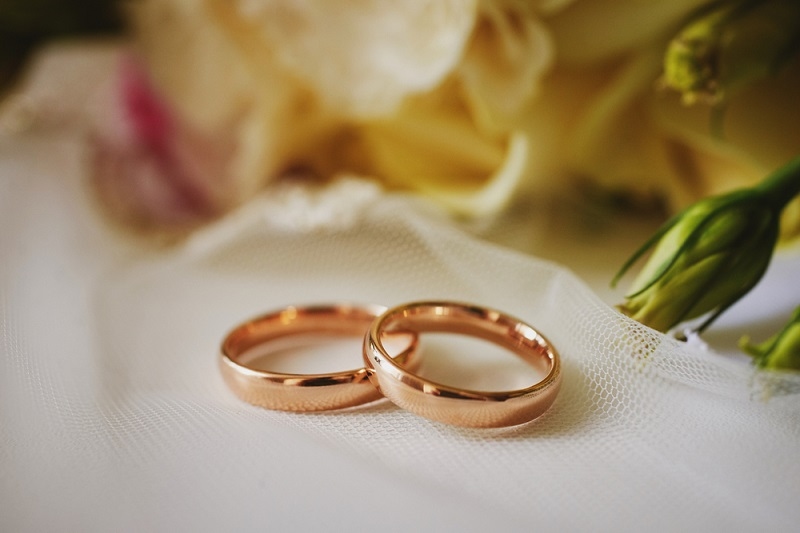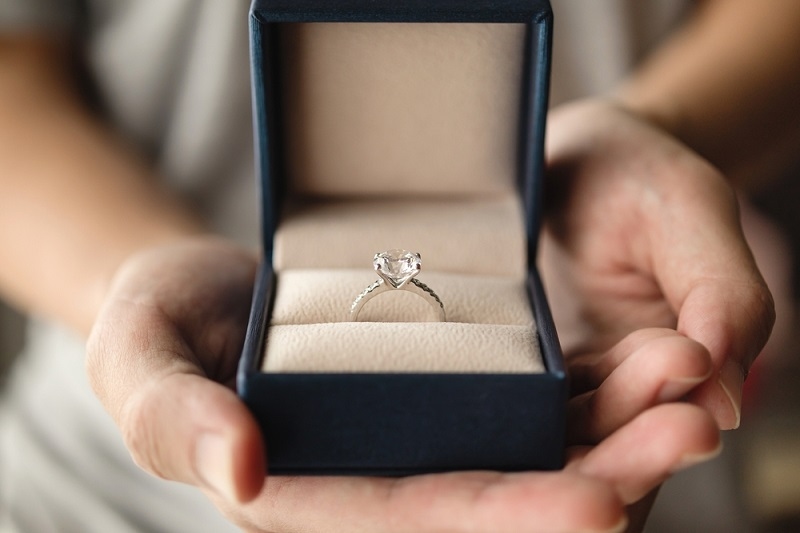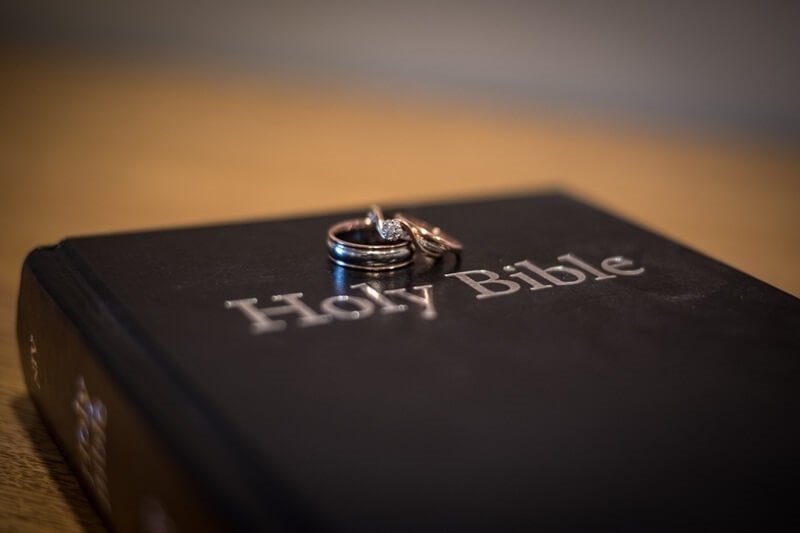Choosing the Ideal Ring Metal: Your Love's Eternal Symbol

Selecting the perfect metal for your wedding ring is more than just a matter of aesthetics; it's a decision that intertwines with your daily life. The right choice reflects not only your personal style but also accommodates your budget and complements your lifestyle.
While the shimmer and hue of the metal might catch your eye, it's essential to delve deeper. Consider its durability, especially if your daily activities might expose it to wear and tear. Maintenance is another factor; some metals require regular upkeep to retain their shine. Ultimately, the ideal metal harmoniously blends your aesthetic preferences, lifestyle needs, and budgetary constraints.
Platinum

Platinum, a lustrous silver-white metal, stands out in the realm of jewelry for its myriad of benefits. Revered for its natural brilliance, it doesn't tarnish or fade over time, ensuring a perpetual sheen. Its durability is unparalleled, making it a preferred choice for those seeking longevity in their jewelry. Moreover, its hypoallergenic properties make it an excellent option for individuals with sensitive skin, eliminating concerns about allergic reactions.
When compared to white gold, platinum is denser and retains its color without the need for re-plating. While both metals exude elegance, platinum's inherent qualities often position it as a premium choice.
Gold

Men's engagement rings, once a rarity, have now emerged as a modern symbol of commitment, reflecting a blend of tradition and contemporary style. Gold, a metal steeped in history, has been a symbol of wealth, power, and romance for millennia. Its timeless allure is evident in its various hues: the classic radiance of yellow gold, the contemporary elegance of white gold, and the romantic warmth of rose gold. The purity of gold is measured in karats, with 24 karat being pure gold. However, pure gold is soft and malleable, making it susceptible to wear and tear.
To enhance its strength, gold is often alloyed with other metals. For instance, white gold is mixed with palladium or nickel, while rose gold derives its hue from a blend of gold and copper. These alloys not only bolster gold's durability but also offer a spectrum of colors to suit every individual's preference.
Rose Gold

Rose gold, often described as the poetic blend of metals, owes its captivating blush hue to the combination of gold and copper. The depth of its color varies based on the copper content: the higher the copper, the richer the rose tint. This unique composition has catapulted rose gold to contemporary fame, making it a sought-after choice for modern jewelry enthusiasts.
Its warm, pinkish-red undertones evoke feelings of romance and nostalgia, setting it apart from traditional golds. The aesthetic allure of rose gold, coupled with its vintage charm, resonates with those seeking a fusion of tradition and modernity in their jewelry pieces.
Palladium

Palladium, a member of the platinum group metals, shares many similarities with its more renowned counterpart, platinum. Both metals boast a lustrous white hue, but palladium often comes at a more affordable price point. Its lightweight nature makes it comfortable for daily wear, and like platinum, it doesn't tarnish easily.
However, while palladium is durable, it's not quite as resilient as platinum. One potential downside is its susceptibility to scratches and the challenge of resizing, which can be a consideration for lifetime wear.
Sterling Silver

Silver, one of the earliest metals used in jewelry-making, has a rich historical tapestry. Sterling silver, an alloy containing 92.5% silver and 7.5% other metals (typically copper), was introduced to enhance silver's durability. This blend offers the luminous appeal of pure silver but with increased strength.
Its affordability makes it a popular choice for various jewelry pieces. However, sterling silver requires diligent care. It can tarnish when exposed to certain elements, necessitating regular polishing to maintain its shine. Proper storage, away from moisture and air, can also help in preserving its pristine condition.
Titanium

Originating from industrial applications, titanium has transitioned into the world of jewelry, offering a modern and sleek aesthetic. Known for its impressive strength-to-weight ratio, titanium is incredibly durable yet surprisingly lightweight, making it a comfortable choice for daily wear. Its natural gray-silver hue exudes a contemporary vibe. However, one of titanium's few drawbacks is its rigidity. Resizing titanium rings can be challenging, so it's crucial to ensure the correct size when purchasing. For eg: Pear-shaped engagement rings, with their unique teardrop design, elegantly combine vintage charm with modern sophistication, making them a timeless choice for many brides-to-be.
Tungsten

Tungsten, once pivotal in the evolution of lighting with its use in lightbulbs, has found a new role in modern jewelry. Renowned for its exceptional durability, tungsten is significantly harder than most metals, including titanium. Its natural sheen remains intact without much maintenance. However, its strength is a double-edged sword. While it's resistant to scratches, tungsten can be brittle and may fracture if subjected to a hard impact. In terms of care, its inherent hardness means it requires minimal maintenance to retain its luster.
Cobalt

Cobalt, with its bright, white appearance, closely resembles platinum and white gold. Beyond its visual appeal, cobalt is naturally hypoallergenic, making it suitable for those with sensitive skin. In terms of durability, cobalt stands out with its impressive scratch resistance, ensuring the jewelry remains pristine over time. Its resilience combined with its aesthetic charm positions cobalt as a compelling choice for contemporary jewelry enthusiasts.
General Care Tips for All Metals
Cleaning Recommendations
- Regularly soak the jewelry in a mix of warm water and mild dish soap.
- Use a soft-bristled brush for gentle scrubbing to remove dirt and residues.
- Ensure the cleaning method is compatible with the specific metal and any accompanying gemstones.
Precautions for Activities
- Remove jewelry when swimming to avoid exposure to chlorine or saltwater.
- Take off rings and bracelets before workouts to prevent scratches or bending.
- Avoid wearing jewelry when handling harsh chemicals or cleaning agents.
Annual Checkups
- Schedule an annual inspection with a professional jeweler.
- Check for signs of damage, loose settings, or wear.
- Opt for professional cleaning to maintain the piece's shine and integrity.
You may also like: Find Your Dream Engagement Rings Online
Final Thoughts
In the realm of jewelry, the choice of metal is as significant as the design itself. Proper care and maintenance not only preserve the aesthetic appeal but also extend the lifespan of these cherished pieces. By adopting regular cleaning practices, being mindful of activities that might harm the jewelry, and seeking annual professional checkups, one ensures that their jewelry remains as radiant as the memories it symbolizes.
Whether it's a daily-worn piece or a special occasion adornment, giving your jewelry the attention it deserves will ensure it continues to shine brilliantly, reflecting both its inherent value and the sentiments it holds.
This content was created by AI




